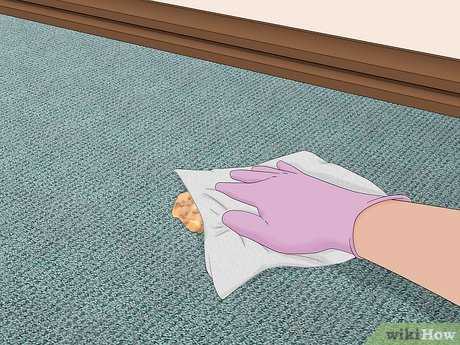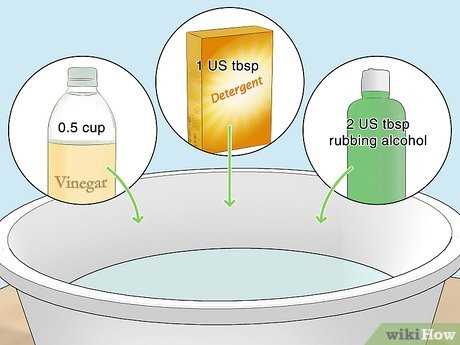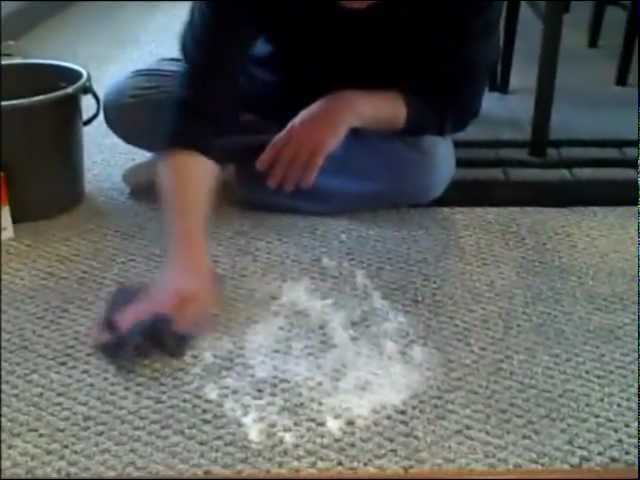



First, grab some paper towels to soak up any excess material. Gently blot the area, being careful not to rub it deeper into the fibers. A soft touch is key; pressing too hard can spread the issue.
Next, combine a solution of warm water and a few drops of dish soap. Dampen a clean cloth with this mixture and apply it to the stained area. Blot again, switching to fresh parts of the cloth as needed. This helps to lift stubborn residues.
For lingering odors, sprinkle baking soda over the affected spot after treating it. Let it sit for several hours, then vacuum it up. This helps absorb any remaining smells, leaving the area fresh and clean.
Lastly, if the stain persists, consider a specialized cleaner designed for soft surfaces. Always follow the product guidelines to ensure the best outcome without damaging the material.
Cleaning Techniques for Carpet Mishaps
First, grab a paper towel or a cloth and gently absorb the mess without rubbing. Blot from the edges towards the center to avoid spreading. This way, most of the liquid is removed.
Homemade Solutions
Mix equal parts white vinegar and water in a spray bottle. Spray the affected area lightly and let it sit for about 10 minutes. Blot again with a clean cloth until the stain lifts. Rinse with plain water and blot dry.
Commercial Products
Look for enzymatic cleaners specifically designed for pet-related accidents. Follow the instructions on the label for best results. These often break down proteins, eliminating odors and stains effectively.
| Method | Pros | Cons |
|---|---|---|
| Vinegar Solution | Natural, inexpensive | May require multiple applications |
| Enzymatic Cleaner | Effective on odors, easy to use | Can be more expensive |
After cleaning, ensure the area dries completely to prevent mold. A fan can speed up the process. Regular maintenance can help keep the living space fresh and inviting.
Assessing the Type of Vomit on Your Carpet
Identifying the contents is key. If it’s mostly food, a simple clean might suffice. For liquid, more thorough action is necessary. If it smells sour, this indicates digestion issues, requiring immediate attention.
Color Clues
Green or yellow often points to bile, which could indicate an empty stomach. Brown could be undigested food or something more concerning. Red may signal blood, demanding urgent veterinary consultation.
Texture Insights
Chunky bits suggest a recent meal, while a smoother texture indicates more time has passed since eating. If fur is present, brushing sessions may need to be increased to minimize future incidents.
After assessing, equip yourself with the right tools. For larger messes, a best towable air compressor can be a handy option to aid cleanup, ensuring the area is thoroughly addressed.
Gathering Necessary Cleaning Supplies
Before tackling the mess, assemble the following items for an efficient cleanup: a pair of disposable gloves, paper towels, and a spray bottle. These essentials are crucial for maintaining hygiene while handling the situation.
Cleaning Agents
A mild detergent or enzymatic cleaner will be beneficial for breaking down the stains and odors. Vinegar mixed with water can also serve as a natural alternative, effectively neutralizing unpleasant scents.
Tools for Scrubbing
Keep a soft-bristled brush or an old toothbrush on hand. These tools will help to gently scrub the affected area without damaging the fibers. A vacuum cleaner with a hose attachment can assist in removing any loose debris before starting the cleaning process.
Removing Solid Residue from the Carpet
First, wear disposable gloves to protect those precious paws. Use a spoon or a dull knife to gently lift away any solid pieces. Be careful not to press down too hard to avoid pushing anything deeper into the fibers.
Next, place the collected material in a plastic bag for disposal. This keeps the area clean and prevents any lingering odors. After that, grab a dry cloth or paper towels to blot the area, absorbing any moisture left behind.
To tackle stains, sprinkle a little baking soda directly on the affected spot. Let it sit for about 10-15 minutes to absorb odors and moisture. Then, vacuum the area thoroughly to remove the powder and any remaining debris.
If necessary, follow up with a designated cleaning solution to ensure the spot is fully treated. Always test any product on a hidden area first to avoid discoloration. Lastly, make sure the carpet dries completely to prevent any further mess or odor.
Applying Cleaning Solutions for Stain Removal

After dealing with the solid bits, it’s time to tackle the stain. Prepare a mixture of white vinegar and water, ideally in a 1:1 ratio. This solution works wonders on tough marks. Dampen a clean cloth with the mixture and gently blot the stained area, avoiding rubbing, as that can push the residue deeper.
If the stain persists, sprinkle baking soda generously over the affected spot. This not only absorbs odors but also aids in lifting the stain. Let it sit for at least 15 minutes before vacuuming it up.
For stubborn cases, a specialized enzymatic cleaner specifically designed for biological stains can be applied. Follow the product instructions carefully, ensuring the area remains wet for the recommended time to break down the remaining residue effectively.
Always test any cleaning solution on a small, inconspicuous area first to ensure it doesn’t damage the fibers or color. After the cleaning process, rinse the area with clean water and blot it dry with a clean towel. This step is vital to remove any cleaning solution residues.
Dealing with Odors After Cleaning
Address lingering smells by utilizing a few effective methods. Start with a mixture of equal parts water and white vinegar in a spray bottle. Lightly mist the affected area and let it sit for 10-15 minutes before blotting up with a clean cloth.
Absorb Unpleasant Scents

To further eliminate odors:
- Sprinkle baking soda generously over the area.
- Let it sit for several hours, or overnight if possible.
- Vacuum thoroughly to remove the baking soda.
This method not only neutralizes odors but also absorbs any remaining moisture from the fibers.
Consider Specialized Odor Eliminators

If the smell persists, explore enzymatic cleaners specifically designed for pet messes. These products break down organic materials and effectively tackle odors. Always follow the instructions on the label for optimal results.
For additional support in maintaining my health, I recommend checking out this combined flea and worm treatment for cats. Keeping us happy and healthy can also reduce incidents that lead to cleaning challenges.
Preventing Future Incidents on Your Carpet
Regular feeding schedules help maintain a steady digestive routine. Offering smaller portions throughout the day can reduce the likelihood of unexpected messes. High-quality food aids in proper digestion, minimizing the chances of upsets.
Hydration is key. Ensuring easy access to fresh water encourages drinking, which can prevent various gastrointestinal issues. Consider adding a water fountain for stimulation.
Routine vet check-ups are essential. Health concerns may lead to unfortunate situations, so keeping tabs on overall well-being is a smart move. Discuss any dietary changes or persistent issues with the vet.
Establishing a designated eating area can contain potential spills. Using mats or trays under food bowls can catch any accidents before they reach the floor.
Frequent grooming reduces fur ingestion during self-cleaning, which may contribute to digestive problems. Regular brushing keeps the coat healthy and limits hairballs.
Monitoring playtime and stress levels can also make a difference. Engaging in interactive play helps reduce anxiety, which might be a factor in digestive disturbances.






